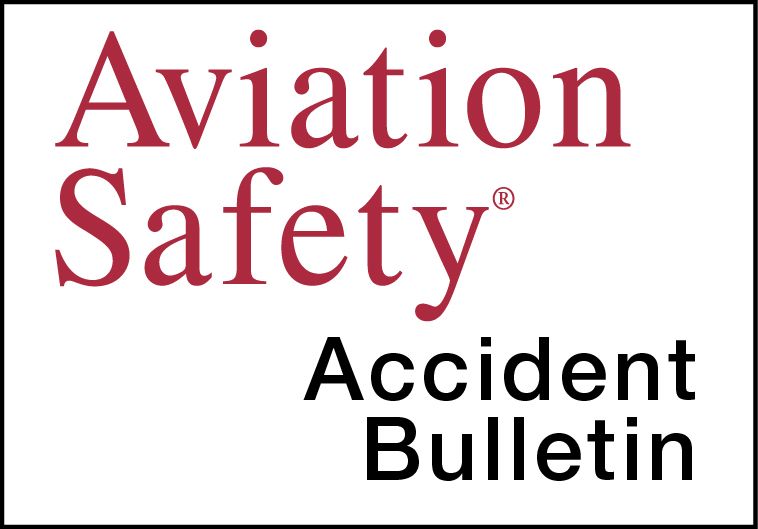AVweb’s General Aviation Accident Bulletin is taken from the pages of our sister publication, Aviation Safety magazine. All the reports listed here are preliminary and include only initial factual findings about crashes. You can learn more about the final probable cause on the NTSB’s website at www.ntsb.gov. Final reports appear about a year after the accident, although some take longer. Find out more about Aviation Safety at www.aviationsafetymagazine.com.
June 1, 2019, Flippin, Ark.
Piper PA-32R-301T Turbo Saratoga
During the landing roll, three deer ran from right to left across the runway. The pilot felt a hard strike on the inboard section of the right wing, observed a deer roll over the right wing and felt a sensation of the right landing gear running over a second deer. Although the airplane sustained substantial damage to its right wing, the pilot was able to maintain control and taxied to the ramp without further incident. The pilot and passenger had to egress through the rear baggage door due to damage to the cabin door.
June 4, 2019, Robertsdale, Ala.
Cessna 182P Skylane
At about 0800 Central time, the airplane was substantially damaged while landing. The solo private pilot incurred minor injuries. Visual conditions prevailed.
According to the pilot, the airplane floated before touching down about ¼ of the way down the 2000-foot-long grass runway. After touching down, he retracted the flaps and held up elevator, but the grass was wet and the airplane would not stop. The pilot added left rudder to avoid rolling across a road but the airplane then struck a ditch at the departure end of the runway before coming to rest upright.
June 7, 2019, Castalia, N.C.
Piper PA-46-350P Malibu Mirage
The airplane broke up in flight at about 1333 Eastern time. The private pilot, a pilot-rated passenger and two other passengers were fatally injured; the airplane was destroyed. Instrument conditions prevailed; an IFR flight plan was in effect.
Preliminary ATC radar and communication records show the flight tracking northeasterly at FL270 over eastern North Carolina when the pilot deviated around weather displayed on his radar. About two minutes prior to the accident, the pilot reported entering an area of rain. The airplane was then observed climbing to FL273, followed by a rapidly descending right turn and loss of radio and radar contact. A post-accident review of recorded weather radar data depicted the airplane in the vicinity of heavy rain and thunderstorms at the time of the accident.
The outboard sections of the wings and a section of the elevator were found about 1.4 miles northeast of the main wreckage. Several components of the empennage have not been located due to the dense forest in the area. The main wreckage consisted of the entire fuselage and the inboard sections of the wings. The pilot/owner did not hold an instrument rating. The pilot-rated passenger held an instrument rating, but his logbook did not demonstrate currency. His last recorded flight review was 26 months earlier.
June 7, 2019, Terre Haute, Ind.
Diamond DA20
While practicing crosswind landings on Runway 5, the flight instructor suggested beginning the landing flare closer to the runway. On the next attempt, the student flared too early and the airplane ballooned, drifting left in a “nose high, low airspeed situation.” The instructor called for a go-around and attempted to take control but the student maintained a “very strong grip” on the control stick, and the instructor was unable to make any significant control inputs. The airplane landed and skidded off the left side of the runway, impacting runway lights and sustaining substantial damage. The airport’s automated weather observation reported winds about eight minutes after the accident were from 080 degrees at 11 knots, gusting to 19 knots.
June 8, 2019, Southold, N.Y.
Beechcraft A36 Bonanza
At 0914 Eastern time, the airplane was destroyed by ground impact and a post-crash fire. The commercial pilot and a passenger were fatally injured. Visual conditions prevailed.
Preliminary radar data depict the airplane at 3325 feet MSL and 107 knots groundspeed at 0911:52. The data show the airplane then turned right and began a descent. By 0912:41, the airplane had turned to a heading of about 120 degrees at 2175 ft and 88 knots groundspeed. About that time, the pilot contacted ATC and announced the airplane had experienced “engine failure” and that he would perform a forced landing in a field. Radar data shows the airplane turning eastbound approximately over New York State Route 48 and continuing to descend before entering a tight left turn and reversing course. The last radar target depicted the airplane at 25 feet MSL and 88 knots groundspeed about 200 feet east of the accident site.
Surveillance video depicted the airplane at low altitude in a steep left bank as it turned from a northerly to a westerly heading, contacted the ground and disappeared out of the camera’s view. The airplane came to rest inverted. All major components were accounted for at the accident scene.
This article originally appeared in the September 2019 issue of Aviation Safety magazine.
For more great content like this, subscribe to Aviation Safety!



































